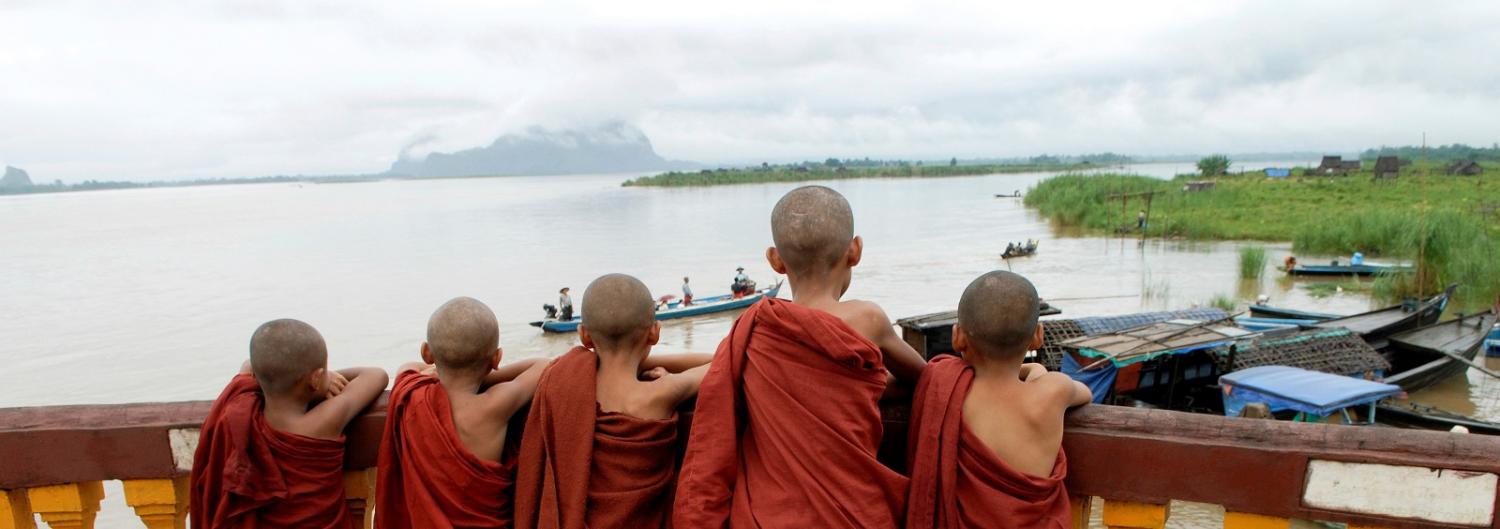In a world where most of the great rivers have been dammed for hydropower, the good news coming out of China is that the spectacular Nu/Salween, one of the last undammed rivers in Asia, will retain its pristine course roaring through the steep gorges and mountains of Yunnan Province.
Beijing’s latest hydropower development plan has dropped all references to dams on this river, which is known as the Nu or Upper Salween in China, the Salween in Thailand, and the Thanlwin in parts of Myanmar. China's updated five-year plan, published in November, confirms the victory of communities, environmental groups and scientists who have campaigned for more than a decade to keep the Nu flowing free.
The original proposal to construct a 13-stage dam on the river was suspended by Premier Wen Jibao in 2004 after an environmental outcry. The Nu flows through a protected world heritage site in China, which UNESCO describes as 'one of the richest temperate regions of the world in terms of biodiversity'. Scientists believe the area supports more than 25% of the world’s animal species and is home to more than 6000 plant species. Two highly respected Chinese geologists also warned of high risks from earthquakes if the dams went ahead.
The suspension in 2004, however, was not final, hence the significance of the latest hydropower plan. It now appears this river is destined to remain a grand exception to the dam-building frenzy that has long suffocated the ecology of Chinese rivers.
Downstream in Myanmar, however, dams still loom.
In 2013 the Myanmar leadership under then-president Thein Sein approved five dams on the Lower Salween. These would inundate ancestral lands, villages and temples of Karen, Karenni, Mon and Shan ethnic peoples. Many of those living in the Salween basin expected the election of the National League of Democracy (NLD) government, led by Aung San Suu Kyi, in late 2015 to lead to major changes to the mega-dam plan.
However, on 12 August, at a press conference to mark the new government's first 100 days in power, the permanent secretary at the Ministry of Electric Power, U Htein Lwin, announced the hydropower projects would go ahead.
And, while Chinese hydropower has been forced into a rare retreat on the Upper Salween/Nu, Sino-hydro and other Chinese companies, with support from the Chinese government, are aggressively lobbying the NLD government to resume dam projects on the Lower Salween.
Aung San Suu Kyi, the NLD’s foreign minister (who also holds the title of state counsellor) selected China for her first overseas state visit, reflecting the high priority given to good relations with Myanmar's powerful neighbour.
But the Nobel Laureate also needs to listen to other Chinese voices. So far she has not visited Yunnan Province and has not had the opportunity to meet the award-winning environmentalist Dr Yu Xiaogang, founder of the Kunming-based NGO Green Watershed. In an interview with the author, he explained that the location of several dam projects in Myanmar are part of the same zone of earthquake fault-lines that pose such a danger in Yunnan province.
Any map of the five Salween dam projects planned downstream is also a good guide to areas of major military conflict in Myanmar today. There are at least four armed rebel groups in the vicinity of the Mong Ton dam project in Shan State, for example, and tens of thousands of villagers displaced by Burmese army offensives.
Aung San Suu Kyi wants all parties to sign a nation-wide ceasefire and peace agreement, but she has no control over military operations in the ethnic states. While Myanmar’s armed forces have permitted the NLD party to form a new government, under the 2008 military-drafted constitution defence, internal security and border affairs are exempted from civilian control.
Recent Burmese army advances in ethnic Karen state appear to be designed to secure more control of land adjoining the site of the proposed Hatgyi dam, in spite of the ceasefire agreement signed with the KNU (the Karen National Union that includes an armed wing that controls territory near the Hatgyi dam-site).
Kesan (The Karen Environmental Social Action Network), which conducts extensive education and training workshops among the Karen people, claims that pushing ahead with these dams in the minority ethnic states will inevitably fuel greater conflict in a nation that has already suffered five decades of civil war.
Kesan has launched the Salween Peace Park intiaive which includes a protected wildlife sanctuary where endangered species including tigers and leopards have been observed. It has wide support from villagers in the KNU-controlled zone of Karen State in Eastern Myanmar.
Large dams displacing tens of thousands and damaging the culture and the economy of indigenous peoples are invariably divisive. By focusing on wild life and ecological protection the Karen people hope that the Salween Peace Park can help to turn the tide in favour of the peace process.
Earlier this year National Geographic magazine reported Yunnan provincial leaders had turned their back on dams, and were now focused on expanding ecotourism and the Nu River gorge - dubbed 'the Grand Canyon of the East' in the Gaoligong Mountains - that separates China from Myanmar.
There is thus an historic opportunity to follow the positive example set by China, and extend ecological protection and ecotourism on a free-flowing Salween, all the way from Yunnan and through four ethnic states of Myanmar.
However, China is not encouraging any such putative ecological alliance between the two countries. Regardless of the obvious contradiction with China's Salween policy. Chinese-built dams in Myanmar may serve a strategic purpose for Beijing.
But if Myanmar dares to defy the pro-dam lobby, then the dream of these ethnic peoples of peace, friendship and cross-border cooperation could become a reality. Maintaining a river with no dams could boost an alternative development model promoting ecotourism, solar energy, wildlife conservation and even a nationwide peace settlement. It is a tantalising prospect.
